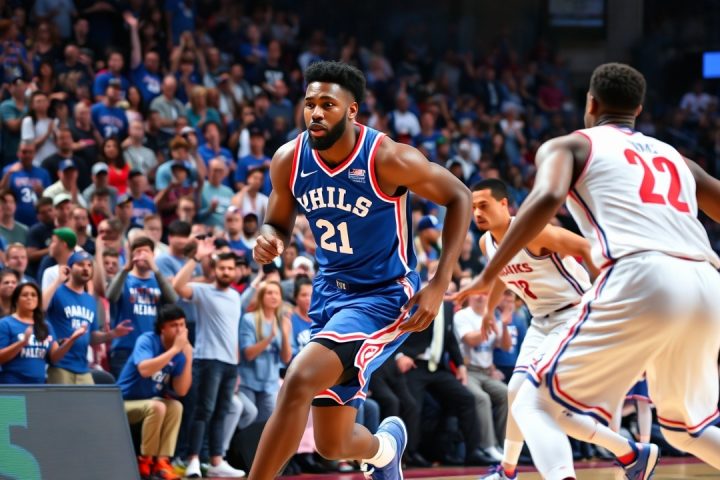NBA Offseason and Restricted Free Agency
As the NBA offseason nears its conclusion, several restricted free agents are still waiting for contracts, including Jonathan Kuminga from Golden State, Cam Thomas of Brooklyn, Quentin Grimes from Philadelphia, and Josh Giddey of Chicago. This situation has resulted in a stalemate between teams and players, with no offers being put on the table by rival franchises.
The Restricted Four
Writers Tony Jones and Eric Koreen recently discussed the realities of restricted free agency (RFA) and whether this aspect of the NBA is an outdated concept in today’s economic landscape. Kuminga, Thomas, Grimes, and Giddey, collectively dubbed the “Restricted Four”, are all in a position where their future contracts depend on whether rival teams extend offer sheets, which the clubs can choose to match.
Market Dynamics
With the Brooklyn Nets being the only team with substantial cap space available this summer, it’s remarkable that they chose not to pursue any of these players. Each one has shown potential, but none have reached All-Star status, complicating their free agency prospects. Giddey, for example, displayed impressive numbers in his final games with the Bulls, averaging over 21 points, 10 rebounds, and nearly 10 assists post-All-Star break. While he contributed positively to Chicago’s performance, it was insufficient to transform the team into a playoff contender.
Historical Context of RFA
The roots of restricted free agency can be traced back to changes made after the 1999 lockout, aimed at preventing young talent from hitting the unrestricted market too quickly, which the owners viewed as detrimental. However, as expectations around player salaries evolve, the effectiveness of RFA is being questioned more than ever.
Control vs. Compensation
Jones believes that RFA provides essential control for small-market teams over their star players by allowing them to retain talent for up to nine years. Yet, the recent collective bargaining agreement appears to hamper RFA, making teams hesitant to spend significantly on players as they navigate new financial penalties. This has left many players in limbo, especially those whose recent performances would have traditionally garnered lucrative deal offers.
Koreen raises concerns about whether players are fairly compensated under the current system, given its restrictive nature. He notes that ideas about abolishing the draft are gaining traction, sparking discussions about player autonomy and the overall fairness of how teams manage their rosters. The dynamic this offseason exemplifies how certain talented players are stuck without options, reliant on the willingness of the teams that hold their rights.
Conclusion
As the debate continues among analysts regarding the merits of RFA, it’s apparent that the phenomenon reflects deeper issues within the league’s financial governance. In an era where player value is often dictated by market conditions and team strategies, the Restricted Four’s fate serves as a reminder of the challenges many young NBA talents face in an increasingly complex and commercial environment. Should restrictions remain, the dialogue surrounding potential modifications to RFA may need to take center stage in future discussions, particularly as teams prioritize immediate financial flexibility over long-term stability.




